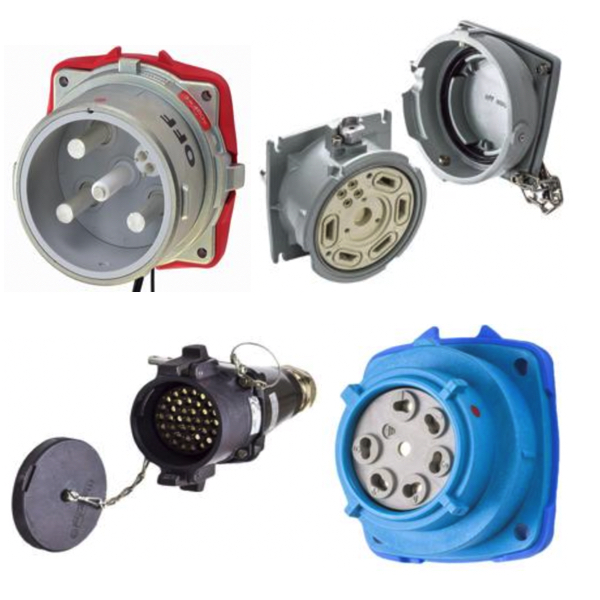Plugs & Receptacles

Essential components of electrical systems, plugs and receptacles connect power to a multitude of devices and appliances. They are designed to fulfill the standard wiring requirements, which means they offer a secure and efficient connection. Their mechanism of operation is quite simple. A plug is inserted into a receptacle, and an electrical circuit is completed, allowing electricity to flow in a neat and orderly manner to the connected device. The two components, however, are both engineered specifically to handle certain amperage levels. Also, the receptacles are designed to accept plugs in a certain way, which helps ensure compatibility across different applications.
Electrical receptacles and plugs have a scope spanning from basic, domestic devices to complex, industrial assemblies. They serve to consistently connect and disconnect electrical circuits while keeping the user safe from moisture, dust, and inopportune contact with live parts. Increasingly, modern receptacles have features to improve electrical connection reliability and to keep users safe from tampering and accidental contact with live parts. Some are also built to withstand the damaging effects of environmental exposure.
More Information about Industrial Plugs and Receptacles
Switch-Rated Plugs and Receptacles
Switch-Rated plugs and receptacles prevent unintended access to live parts with an integral switching function that ensures that the plug contacts are de-engergized before an operator can remove the plug from the receptacle. Visual verification is provided when the power is off. The operator's safety is assured without the need to perform hazard analysis, use electrical protective equipment or establish flash protection boundaries.
FAQs
Are industrial plugs and receptacles safe to use in an outdoor installation?
Industrial plugs and receptacles can be safe to use in an outdoor installation, but it's essential to carefully consider the application, environment, and rating of the connectors, as well as following proper installation and maintenance practices.
How does a GFCI electrical outlet work correctly when exposed to water?
A GFCI electrical outlet works correctly when exposed to water by quickly shutting off power if it detects a ground fault or imbalance in current, helping to prevent electric shock.
Which industries are ideal for safely using switch-rated plugs and receptacles?
Industries such as manufacturing, food processing, wastewater treatment, and mining are ideal for safely using switch-rated plugs and receptacles due to their need for reliable power connections in harsh and high-demand environments.
AC Grounding Basics: Grounding Series (Part 4)
The National Electrical Code (NEC) states that electrical systems must be grounded to a point that the maximum voltage, to ground underground conductors, does not exceed 150 volts. It also states that any 3-phase 4-wire, Y configurations and Delta configurations have the neutral wire grounded as well. These requirements cover any electrical systems ranging from single-phase 120 volts, all the way to 3-phase 480 volts AC. The conductor that needs to be grounded in these types of systems will always be the neutral wire.
A bonding conductor is needed between the grounded conductor and the equipment, grounding the conductor to the metallic enclosure of the main electrical service. It is important to make sure that a properly sized conductor is used to accommodate the potential surges that may occur in the electrical system. When grounding in a separately derived AC system, which is a system where components such as a generator can have the grounded conductors, where continuity is possibly interrupted by a transfer switch, it is important to make sure that the grounding conductor is bonded to the equipment grounding conductor of the metallic chassis on the load side of the electrical service through the use of a main bonding jumper. When continuity is not being interrupted on the load side, then it is critical to make sure that there is no bond between the neutral wire or grounding conductor and the metallic chassis of the electrical service. This will allow the main bonding to occur at the main service panel entrance point.

